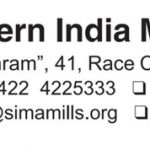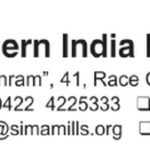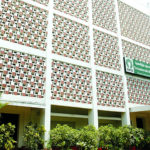
Coimbatore
4.1.2022
The Government took several proactive policy initiatives to address the structural issues on tax front, raw materials and tariff barriers to enhance the global competitiveness of various manufacturing sectors in the country especially the textile industry that provide jobs to over 105 million people especially rural masses and women folks. The Government was bold enough to bring entire textile value chain under GST net and remove the anti-dumping duties levied on polyester raw materials, polyester fibre and acrylic fibre. The Government also brought RoDTEP scheme to refund the applicable and embedded taxes apart from extending duty drawback benefits to refund all the taxes and levies and thereby enhance global competitiveness.
On the other hand, the only negative step that the Union Government brought is the levy of 5% BCD, 5% AIDC and 10% social welfare cess on both totaling 11% on cotton imports in the Union Budget 2021-22. The industry immediately pleaded the Government to roll back the decision as the industry has been importing only 4% to 5% of the cotton consumed by the industry that are not produced by the Indian farmers. Occasionally, the industry opted for imports only during off season when there is a shortage, or the domestic cotton price is much higher than the international price. Thus, the industry had a level playing field. Therefore, the removal of 11% import duty on cotton and cotton waste will not affect the Indian cotton farmers.
During the cotton season 2021-22, though the season started with comfortable opening stock of 75 lakh bales and estimated crop of 360 lakhs bales, the cotton prices started skyrocketing from the beginning of the season owing to the unprecedented volatility in the international cotton prices. There was a pent-up demand for the cotton in the post-COVID period. The US sanctions on Xinjian cotton that accounts 10% of the world cotton production and the commodity markets have fueled the situation. The Indian Commodity Markets MCX and NCDEX dominated by the large traders are also fueling the market.

Mr. Ravi Sam
In a Press Release issued here today, Mr. Ravi Sam, Chairman, The Southern India Mills’ Association, has stated that the Indian cotton textile industry all along had home grown cotton advantage as the cotton would be cheaper by 5% to 10% during the cotton season (December to March) and remained globally competitive. He has said that the seed cotton price started surging from the beginning of the season. The average price of Gujarat Shankar-6 cotton that prevailed at Rs.6,788/- per quintal on 1st October 2021 has now increased to Rs.8,930/- while good quality kapas price has increased from Rs.7,575/- to Rs.10,760/-. He has said that the New York Features price has always been higher than the Indian cotton price and for the first time, the Indian cotton price is ruling higher than the international cotton price consequent to the levy of import duty and curtailing the competitiveness of the exporters. The Indian cotton price per kg is higher by Rs.10/- to Rs.15/- per kg for the last two months and the situation is likely to aggravate further. Mr. Ravi Sam has stated that the exporters are not able to confirm the export orders that they normally firm up during December-January and the orders are flowing to competing Nations.
SIMA Chairman has stated that quality cotton is not available in the market and the premium for the same is 5% to 7% higher and the mills are finding it difficult to procure cotton even for the day-to-day use, as the farmers anticipate further hike in cotton prices. He has cautioned that the cotton textile value chain might come to a grinding halt in the coming months if the import duty on cotton is not removed immediately. He has added that MCX and NCDEX features also are aggravating the market. SIMA Chairman has pleaded the Hon’ble Prime Minister to intervene and remove the 11% import duty on cotton and cotton waste and also remove cotton from MCX and NCDEX features as recently done for certain agricultural products to avoid further speculation.
Comparison of Domestic Cotton, Kapas and International Prices
| Month & Year | NYF | Shankar- 6 | Kapas Price Shankar-6 (Rajkot) |
|||
| Cents/lb | Rs/Kg | Rs/Candy | Rs/Kg | Rs/Qtl | ||
| Average | Average | Maximum | Average | |||
| Oct-21 | 115.03 | 190 | 59879 | 168 | 9700 | 7780 |
| Nov-21 | 106.41 | 175 | 65861 | 185 | 9200 | 7520 |
| Dec-21 | 113.63 | 187 | 70000 | 197 | 10760 | 7870 |
Source: CAI, CCI & Investing.com





